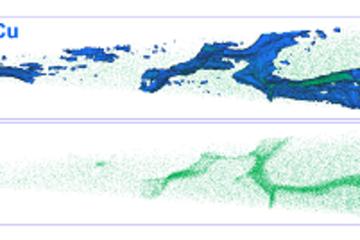All genres
1.
Journal Article
Role of Alloying Elements and Carbides in the Chlorine-induced Corrosion of Steels and Alloys. Materials Research 7 (1), pp. 89 - 95 (2004)
2.
Journal Article
Fundamental aspects of chlorine induced corrosion in power plants. Materials at High Temperatures 20, 2, pp. 153 - 159 (2003)
3.
Conference Paper
The role of alloying elements on the corrosion in oxidizing and chloridizing gases. In: Corrosion 2001, pp. 1 - 10. Corrosion 2001, Houston, Texas, USA, 2001. (2002)
4.
Talk
Fundamental aspects of chlorine induced corrosion in power plants. Invited lecture on the Workshop: ‘Life cycle issues in advanced energy systems’, Woburn, UK (2002)











